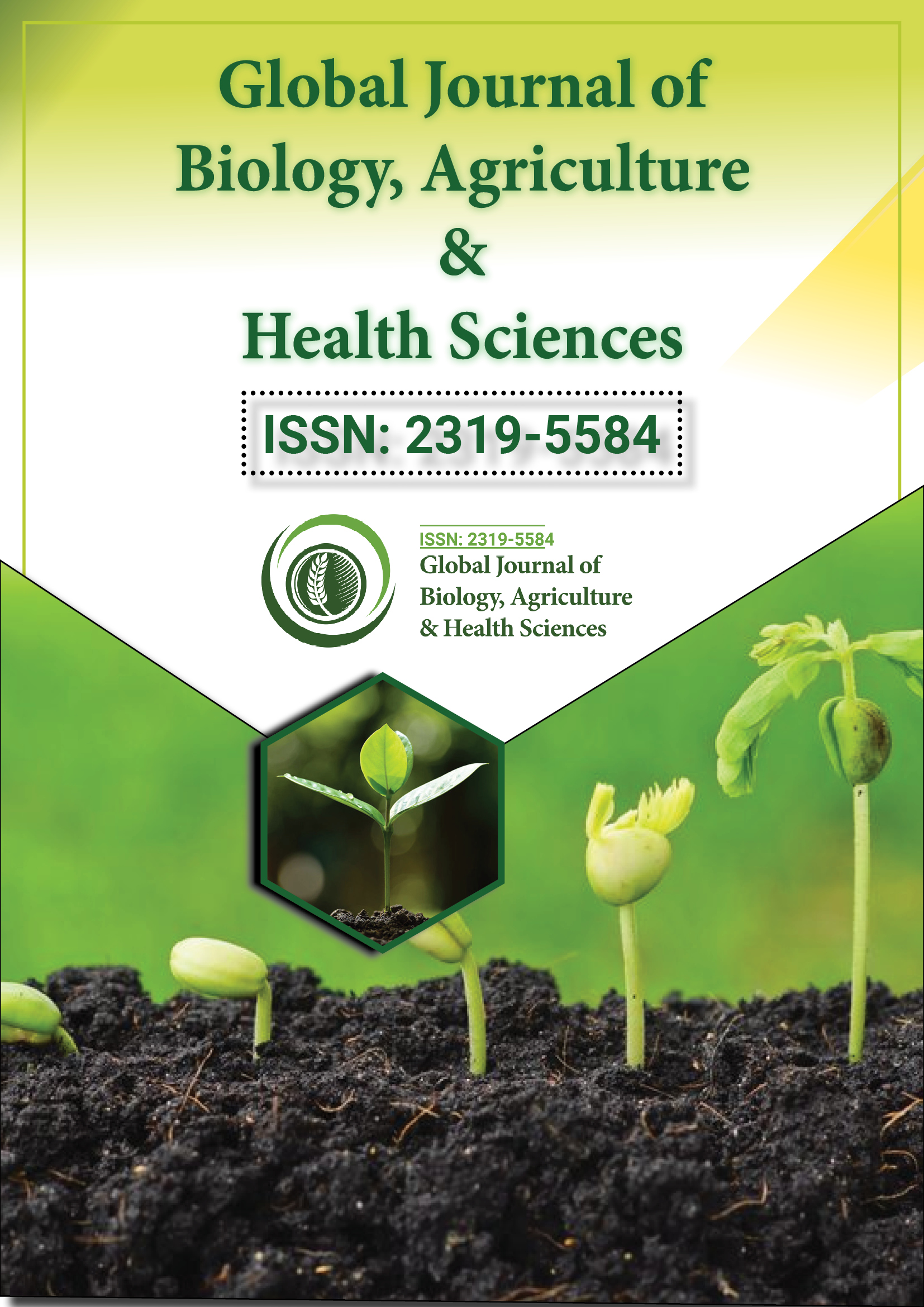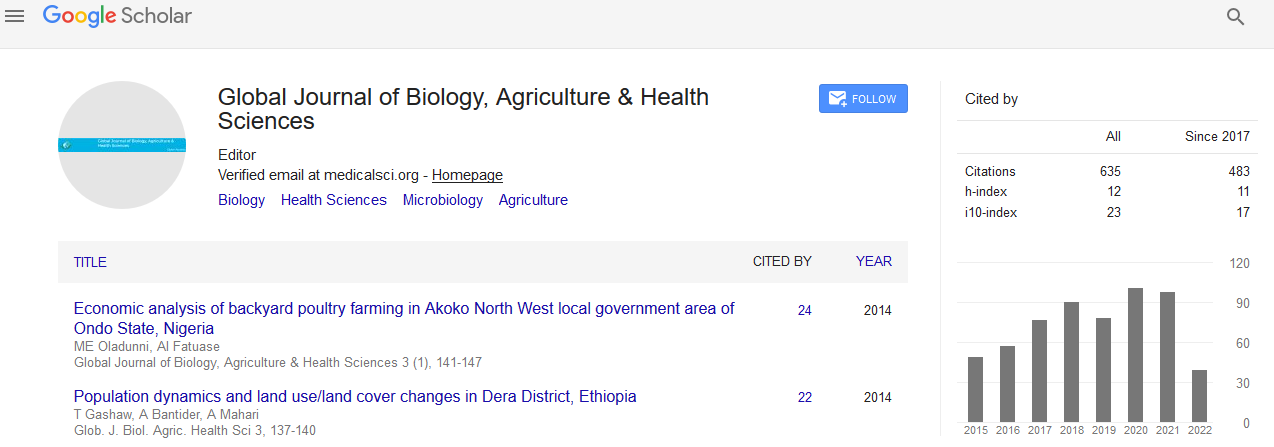Indexed In
- Euro Pub
- Google Scholar
Useful Links
Share This Page
Journal Flyer

Open Access Journals
- Agri and Aquaculture
- Biochemistry
- Bioinformatics & Systems Biology
- Business & Management
- Chemistry
- Clinical Sciences
- Engineering
- Food & Nutrition
- General Science
- Genetics & Molecular Biology
- Immunology & Microbiology
- Medical Sciences
- Neuroscience & Psychology
- Nursing & Health Care
- Pharmaceutical Sciences
Opinion Article - (2024) Volume 13, Issue 3
Efforts to Improve Ecology and Environment for Understanding Lake Ecosystems
Filo Haggard*Received: 30-Aug-2024, Manuscript No. GJHABS-24-28139; Editor assigned: 02-Sep-2024, Pre QC No. GJHABS-24-28139 (PQ); Reviewed: 16-Sep-2024, QC No. GJHABS-24-28139; Revised: 23-Sep-2024, Manuscript No. GJHABS-24-28139 (R); Published: 30-Sep-2024, DOI: 10.35248/2319-5584.24.13.231
Description
Lakes are vital ecosystems that provide water resources, biodiversity habitats, recreational opportunities and climate regulation. However, the ecological balance of lakes is increasingly threatened by human activities, climate change and pollution. Efforts to improve lake ecology and environmental health are critical to preserving these essential ecosystems. Through multidisciplinary approaches involving science, community engagement, policy changes and technological innovation, significant progress can be made toward restoring and maintaining the integrity of lakes.
Lakes are complex systems that interact with their surroundings, including terrestrial and aquatic environments. These ecosystems are influenced by factors such as nutrient levels, temperature, water flow and biodiversity. The degradation of these systems often begins with disruptions in nutrient balance, primarily caused by excessive nitrogen and phosphorus inputs from agricultural runoff, industrial waste and untreated sewage.
The accumulation of nutrients can lead to eutrophication, characterized by excessive algal blooms, oxygen depletion and loss of aquatic species. Addressing these issues requires a comprehensive understanding of the ecological processes governing lakes and the pressures they face.
One of the most effective strategies for improving lake ecology is reducing nutrient pollution. Agricultural practices contribute significantly to nutrient loading in lakes. Promoting sustainable farming methods, such as precision agriculture, cover cropping and buffer zones along water bodies, can reduce runoff and enhance soil retention of nutrients. Additionally, adopting organic fertilizers over chemical alternatives can lower the risk of nutrient leaching.
Urban areas also contribute to lake pollution through stormwater discharge. Installing green infrastructure, such as rain gardens, bioswales and permeable pavements, helps absorb and filter stormwater before it reaches lakes. Treating wastewater to remove nitrogen and phosphorus further ensures that urban centers do not contribute to lake degradation.
Riparian zones, the vegetated areas along lake shores, play an essential role in maintaining water quality and ecosystem health. These zones act as natural filters by trapping sediments, absorbing nutrients and reducing erosion. Efforts to restore degraded riparian zones include replanting native vegetation, stabilizing shorelines and managing invasive species.
Such restoration projects not only improve water quality but also enhance habitat availability for aquatic and terrestrial species. Healthy riparian zones contribute to biodiversity, increase the resilience of lake ecosystems and provide aesthetic and recreational benefits.
Invasive species pose significant threats to lake ecosystems by outcompeting native species, altering food webs and degrading habitats. Effective management of invasive species involves early detection, rapid response and long-term control measures. Techniques such as mechanical removal, biological controls and habitat restoration are essential in mitigating the impacts of invasive species.
Public education and community involvement are important in preventing the introduction and spread of invasive species. For example, programs that promote cleaning and inspecting boats before entering lakes can significantly reduce the risk of introducing non-native species.
Biodiversity is a critical component of healthy lake ecosystems. Efforts to enhance biodiversity include reintroducing native species, protecting critical habitats and implementing conservation strategies. Establishing protected areas within lakes and their surrounding environments helps safeguard diverse species and ecological processes.
In addition, supporting aquatic vegetation growth provides shelter and food for various species. Restoration projects that increase structural complexity within lakes, such as creating artificial reefs or reintroducing woody debris, further promote biodiversity.
Climate change poses a growing challenge to lake ecosystems, affecting water temperatures, evaporation rates and seasonal patterns. Adaptive management strategies are essential to mitigate these impacts. For instance, planting climate-resilient vegetation along riparian zones can help stabilize shorelines under changing conditions.
Monitoring and modeling tools are vital for predicting climate impacts on lakes. These tools enable resource managers to anticipate changes in water levels, thermal stratification and species distributions, allowing for proactive interventions.
Community involvement is a foundation of successful lake restoration and conservation initiatives. Local residents and stakeholders can play an active role in monitoring lake health, implementing conservation practices and advocating for sustainable policies. Educational programs that raise awareness about the importance of lake ecosystems empower communities to take ownership of their natural resources.
Citizen science initiatives provide valuable data for researchers and build a sense of connection between individuals and their environment. Activities such as water quality testing, wildlife surveys and shoreline cleanups enable community members to contribute directly to lake conservation.
Effective governance frameworks are necessary to protect lake ecosystems. Policies that regulate land use, industrial emissions and wastewater management are critical in reducing environmental pressures on lakes. International cooperation is also important for transboundary lakes shared by multiple countries.
Incentive programs that reward sustainable practices, such as tax breaks for farmers adopting conservation measures, can encourage widespread adoption of environmentally friendly practices. Establishing and enforcing regulations to prevent overfishing, pollution and habitat destruction further strengthens lake protection efforts.
Advancements in technology provide new opportunities for improving lake ecology. Remote sensing and satellite imagery allow for large-scale monitoring of water quality, vegetation and land use changes. These tools help identify areas requiring intervention and track the success of restoration projects.
Emerging technologies such as floating wetlands, aeration systems and biofilters are being used to improve water quality in degraded lakes. Innovations in wastewater treatment, including the use of advanced filtration systems and nutrient recovery technologies, further reduce nutrient inputs into lakes.
Citation: Haggard F (2024). Efforts to Improve Ecology and Environment for Understanding Lake Ecosystems. Glob J Agric Health Sci. 13:231.
Copyright: © 2024 Haggard F. This is an open-access article distributed under the terms of the Creative Commons Attribution License, which permits unrestricted use, distribution, and reproduction in any medium, provided the original author and source are credited.

